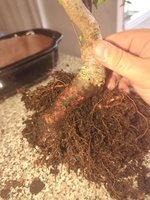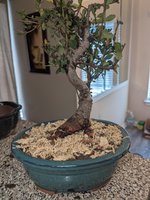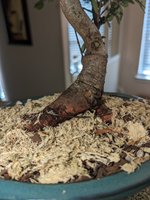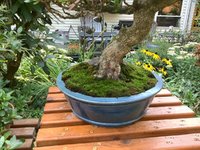gfreak
Mame
Was getting this Chinese elm out of the nursery soil. And realized they must've just planted up a bit over the trunk.
Would love thoughts as to what y'all would do .
Leave that lower trunk partially exposed liken nebar?
Eventually cut that off?
My original plan was to plant it as a plant off to the left but now that guys in the way unless I just cover it up again and pretend it's not there
Thoughts/opinions/advice?
Would love thoughts as to what y'all would do .
Leave that lower trunk partially exposed liken nebar?
Eventually cut that off?
My original plan was to plant it as a plant off to the left but now that guys in the way unless I just cover it up again and pretend it's not there
Thoughts/opinions/advice?








